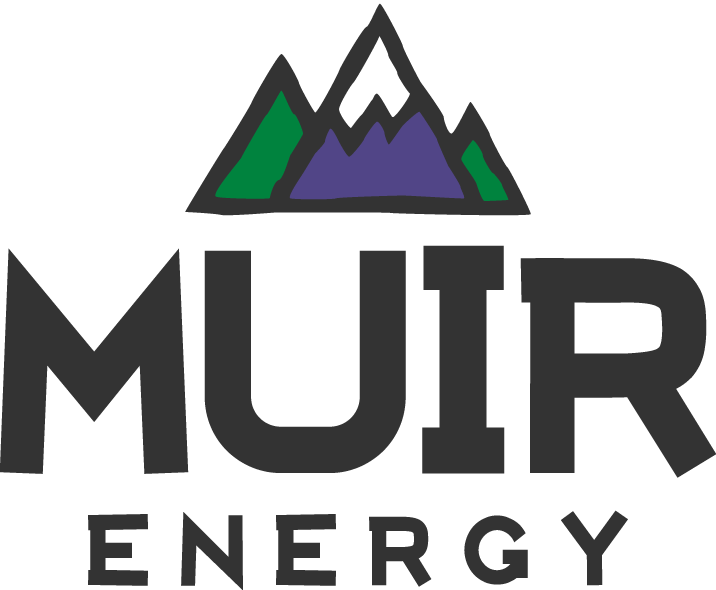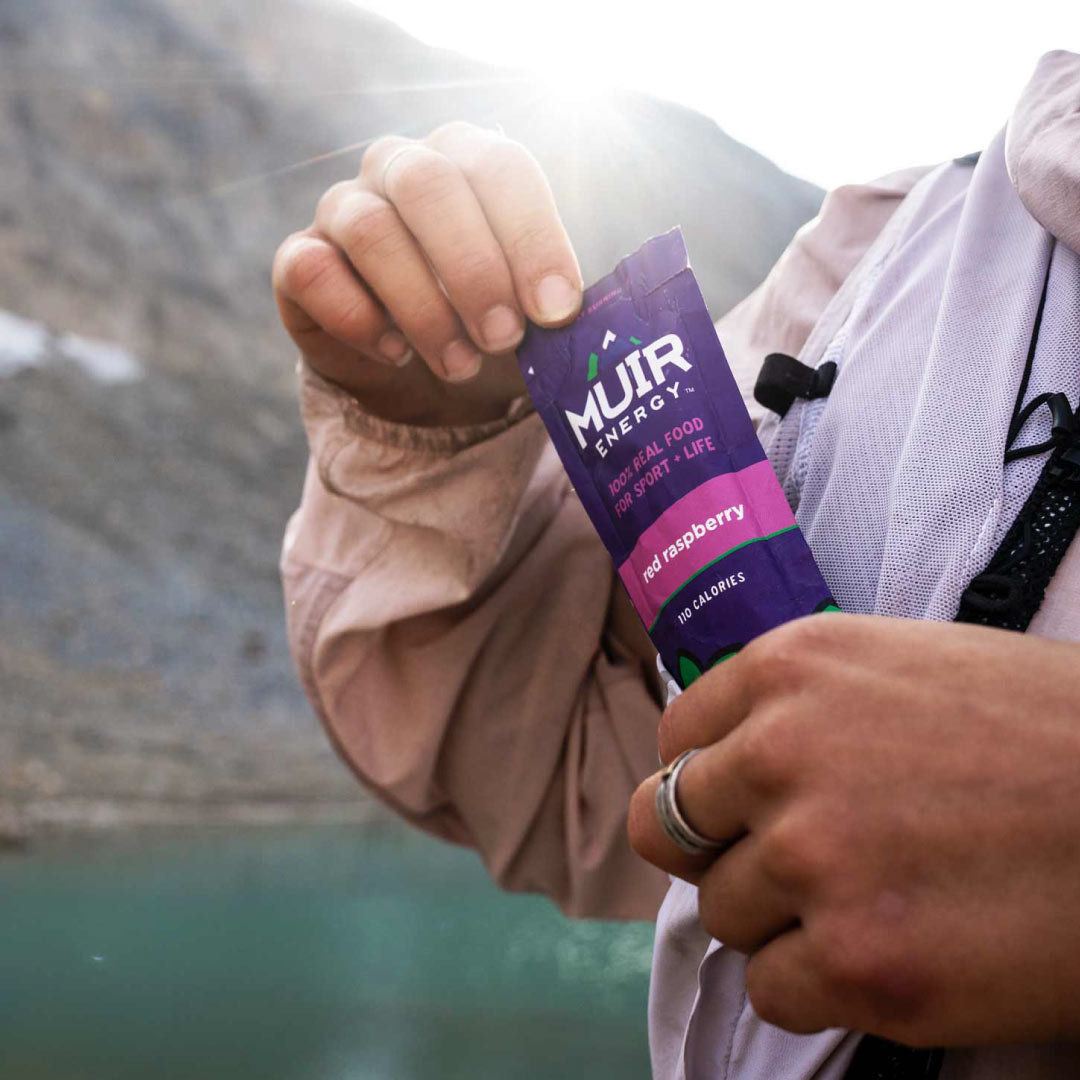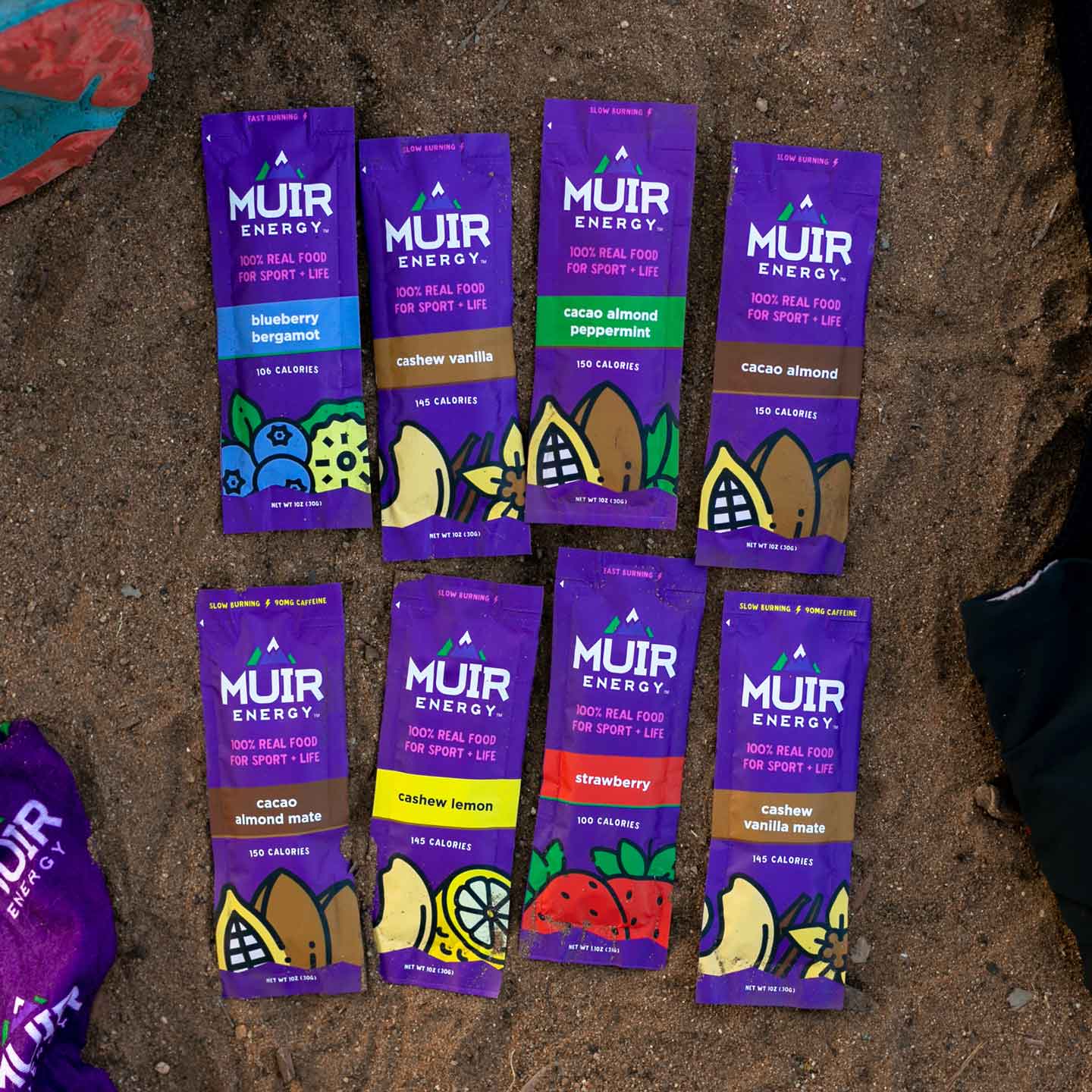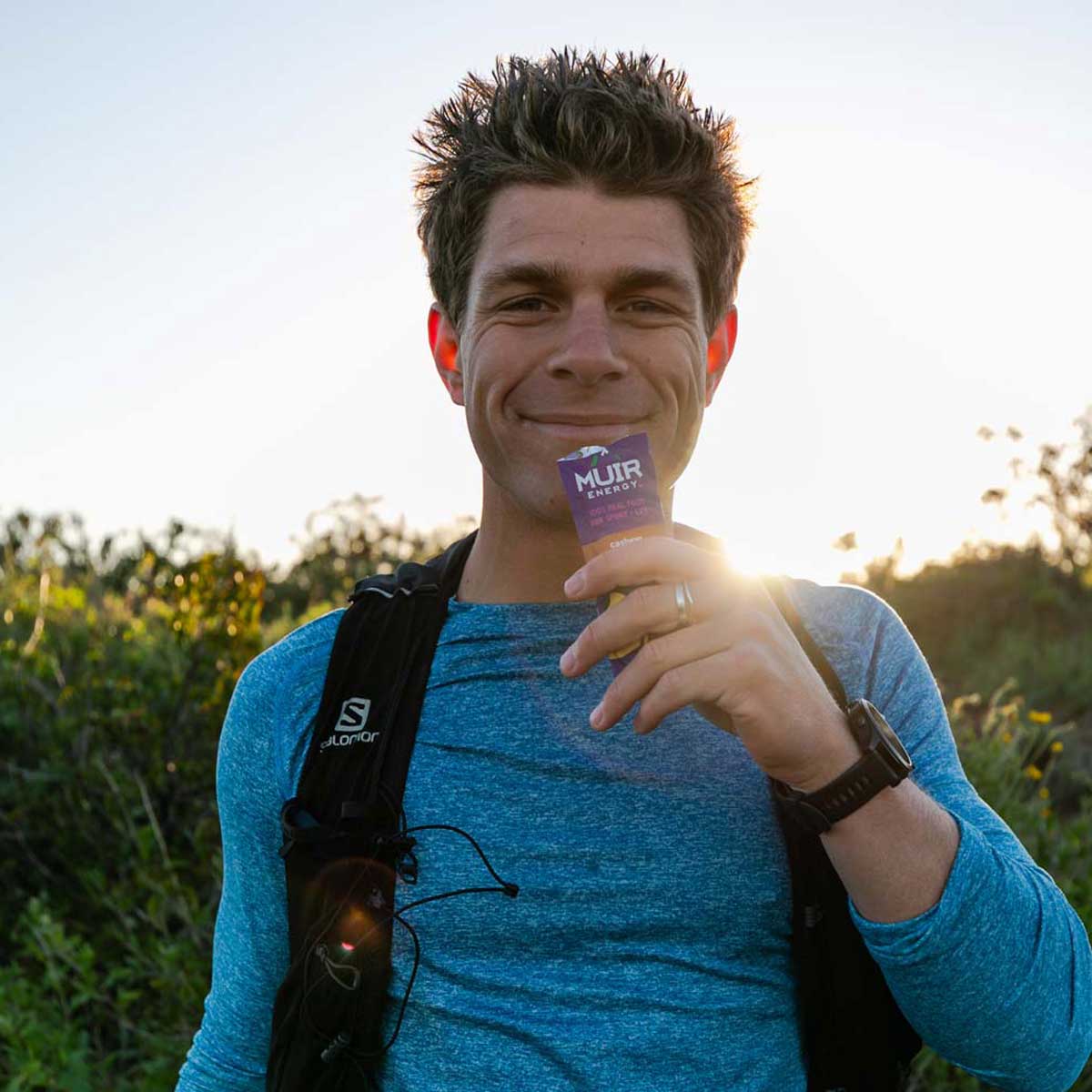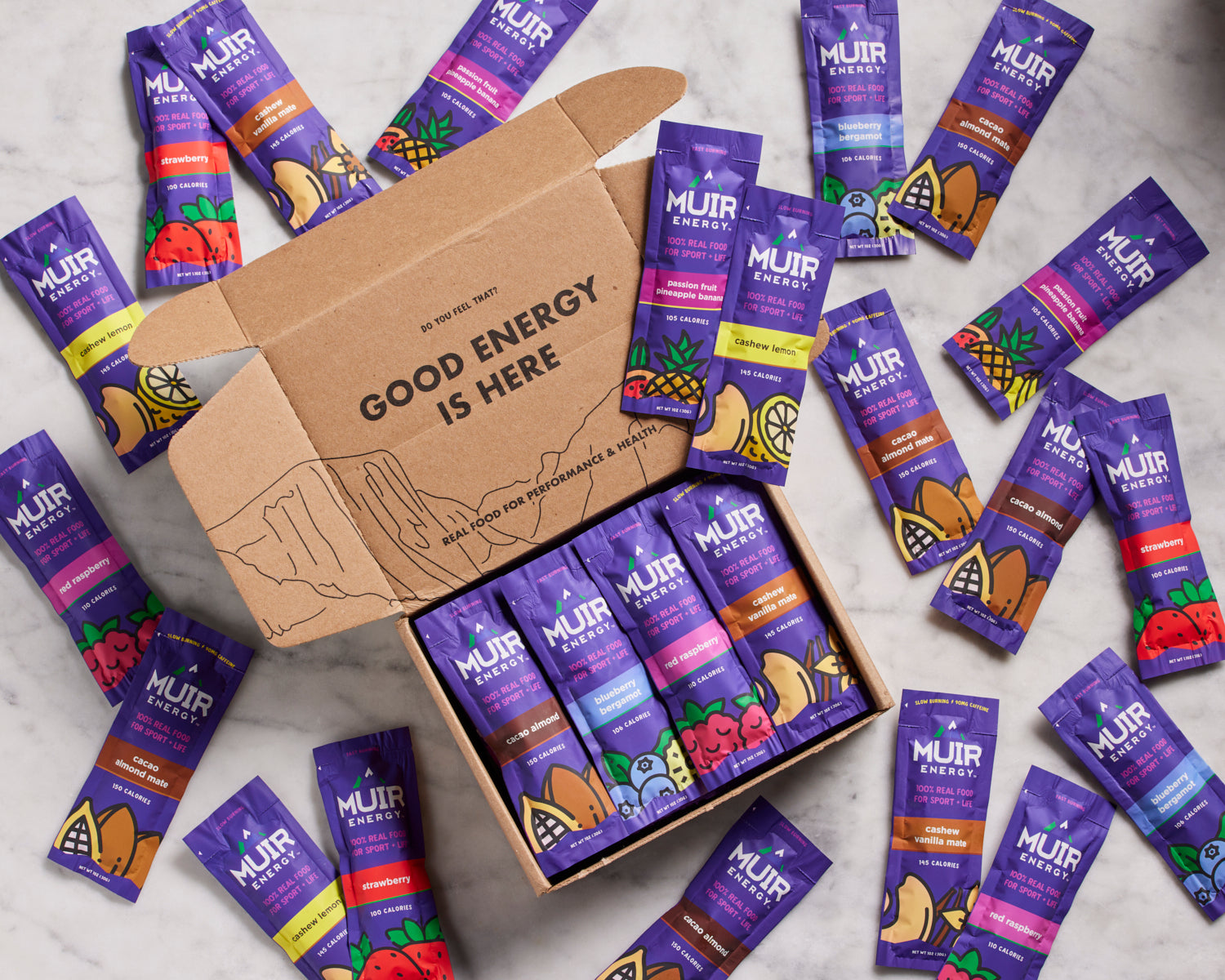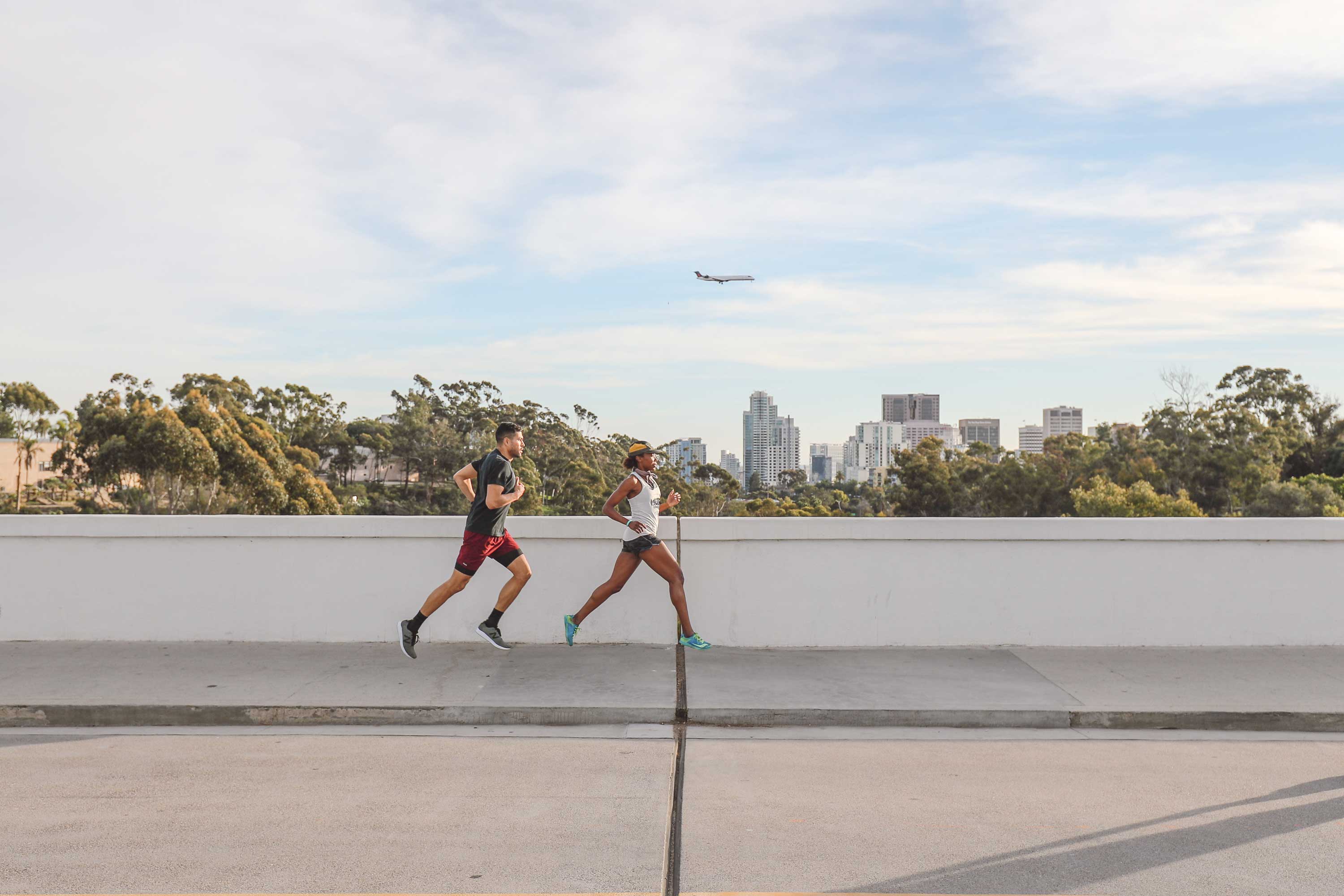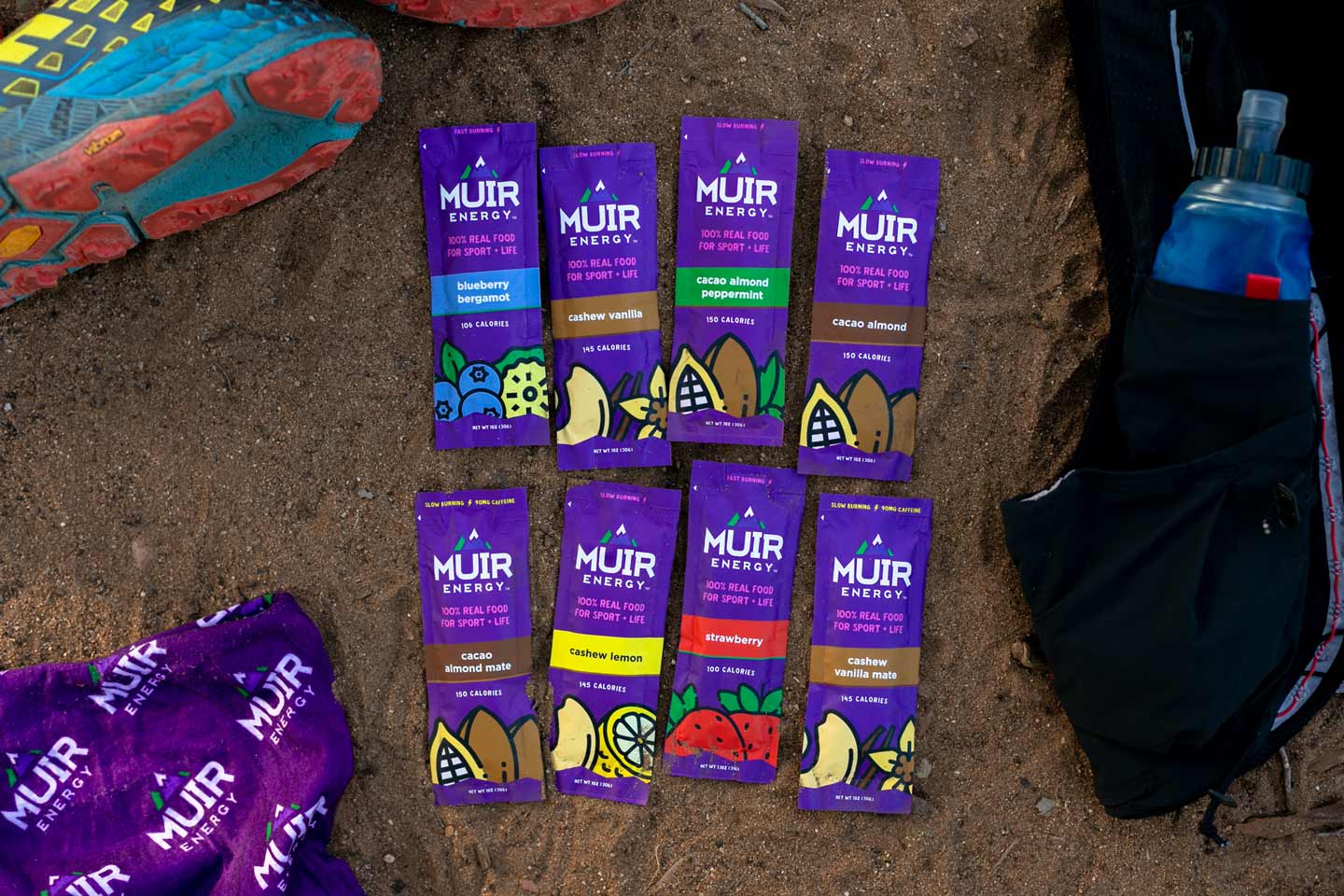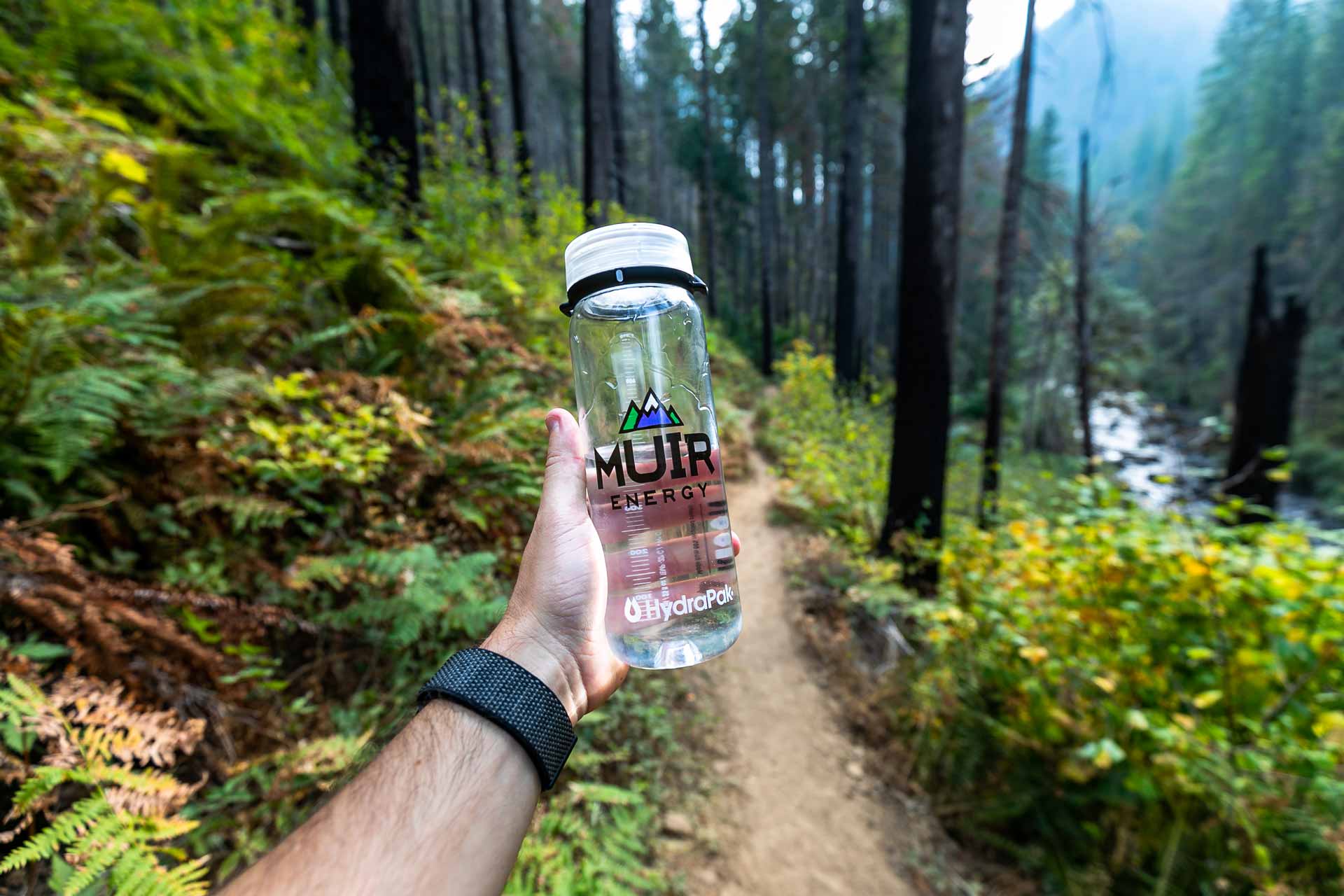 By Georgia Danielson, MUIR Editor
By Georgia Danielson, MUIR Editor
The key to successful--even blissful--long runs starts with your stomach. Just like your muscles and mind, your stomach needs training, too. Most running troubles arise not from physical issues, but G.I. issues, which often can be remedied by just tinkering with your process.
If you’re thinking about running longer or you’re new to running, follow this guide to train your stomach easily into handling food while you run so you can go farther feeling better.
1. Start with Water
You don’t need to get fancy, just make sure it’s very easy to drink from without stopping and comfortable to carry.
Hydration backpacks, specialty running water bottles, hip belts, etcetera are great, but don’t think you need these to start. You can even get a bottle of water at the grocery store or gas station with a flip-to cap that works just fine.
If you do choose a water bottle to run with, just make sure the cap is quick (no twist-off caps) and it’s small enough so that you can run with it in your hand, so no Nalgenes.
Always introduce your gut to new drinks and foods with short, low intensity runs.
WARNING: Do NOT wait until a long run to test out new foods!
Even though you know you’ll be able to finish a short, low intensity run without food or water, THAT IS NOT THE POINT. The point is to train your gut, so start small and move up from there.
So back to water….
You’re going to start by just taking small sips regularly throughout the run. Check in with your body and ask yourself how you’re feeling.
Did you feel great? Awesome -- after a couple of runs feeling great, go ahead and increase the amount of water, intensity, OR the duration.
WARNING: Do NOT increase all three--amount, intensity, and duration--at the same time! Only increase ONE at a time.
Did you not feel so great? Dial it back on either the next run or during the run. So, decrease either amount, intensity, or run for less time. Keep dialing it way back until you get to a point where you finish the run and feel great. Then, after a few runs like that, increase one of the 3 parameters: amount, intensity, or duration.
Once you’re able to consume water comfortably, your gut may be ready for an electrolyte mix.
2. Then Electrolyte Mix
Fill a water bottle with diluted electrolyte mix. So, if you’re using a bottled version from the store, mix at 50% water (or more) and 50% electrolyte drink. If you’re using powder, start with ½ or less the recommended concentration. Remember--there’s no sense in starting off too strong. Your gut takes time to train, so just be patient. It will save you time in the long run by proceeding steadily rather than drastically with drastic setbacks.
Introduce the electrolyte mix the same as you did with water: start with small sips during a short, low intensity run. Check in with your body during and after the run: how does your stomach feel? How does your body feel? Do you need to dial it back? Would you feel comfortable ramping up slightly?
Feel great after the run? Awesome. After a couple of runs or so feeling great, go ahead and increase either the intensity or duration of the run or the amount or strength of the electrolyte mix.
Did you not feel so great? Bummer. Dial it back. Decrease at least one of these parameters: duration or intensity of the run, or the strength or amount of the electrolyte drink.
Once you’re able to consume electrolyte mix comfortably, your gut may be ready to try small portions of food and heavier drink mixes, which is essential for multi-hour runs.
3. Then small portions of food or more calorie dense drinks
Start with foods that are easy for your stomach to handle like MUIR fast burning energy gels, real juice fruit snacks, or even bananas. Carry them in the pocket of your shorts, in your hand, or even a pack.
Just like with water and electrolyte mix, introduce food on a short, low intensity run and take only small bites at regular intervals throughout the run--around every 10-20 minutes. Think a couple of fruit snacks or ¼ of a MUIR fast burning gel, at a time.
Remember: especially on short, easy runs, you won’t feel like you need to eat anything. This is NOT the point! The point is to train your stomach on low consequence runs.
After a couple of runs where your stomach feels really good, try increasing one parameter at a time over a series of runs where you increase intensity, duration, amount of food consumed, and density of food.
If you end a run with an upset stomach, dial it back on the next one: intensity, duration, amount of food consumed, or all three.
4. Increase the frequency, density, and amount (bite/swallow size) gradually over many runs
You can spend many weeks, or even years in this phase, and it can be really fun. You need to really tune in and get connected with your body to find out what kinds of food work best for different kinds of runs, which can be very rewarding to connect with your body this way.
Food density can be summed up in three categories:
-
Fast burning foods get their calories from simple carbs--i.e. Sugars. They’ll be the easiest to digest, but you’ll also burn through them the fastest.
Examples: MUIR Fast Burning Energy, Real Juice Fruit Snacks, Bananas -
Medium burning foods get their calories from complex carbs. These are slightly less easy for your stomach to digest, but provide more stable energy.
Examples: Cereal, Granola, Potatoes, Potato Chips -
Slow burning foods get their calories from fat and protein. These are the most difficult to digest and likely will not work for anyone during very high intensity runs.
Examples: MUIR Slow Burning Energy
Increase the food density only gradually!. It can take a long time to get your stomach to a point where it can handle very heavy foods like trail mix, but having the variety available to you can be a game-changer for long runs.
Some useful DO’s and DON’Ts to remember:
DO test out new foods during short, low intensity runs.
DO consume small portions at a time at regular intervals. You want to avoid creating a lump in your stomach.
DO dial it back if you have stomach trouble in at least one or all five parameters: intensity, duration, food/drink consumption frequency, food amount, food density.
DO NOT introduce new foods to your body during long and/or intense runs.
DO NOT increase more than one parameter at a time.
DO NOT give up! It takes time to train the gut, just like your body and mind. Stay patient.
